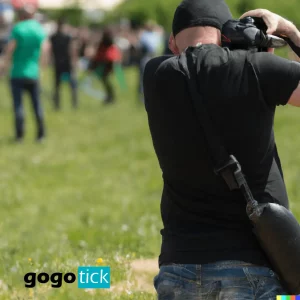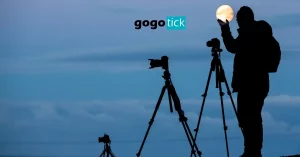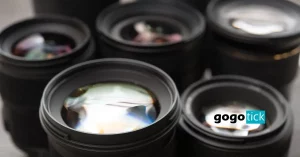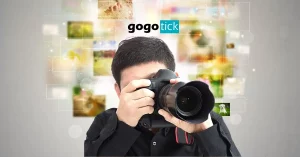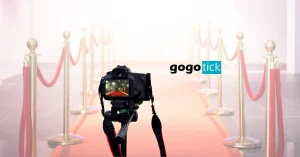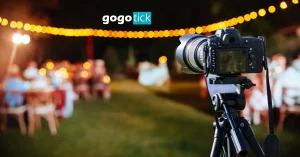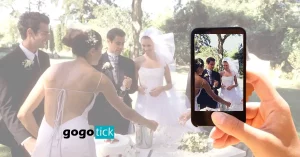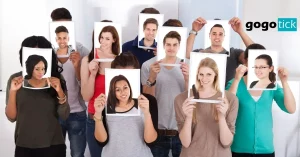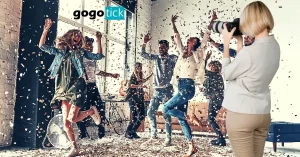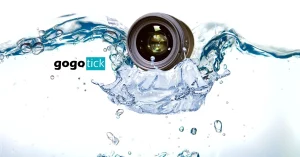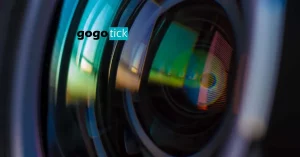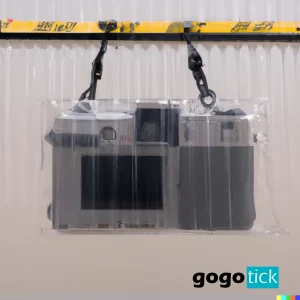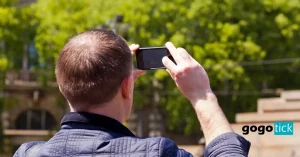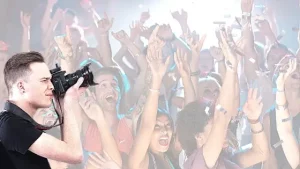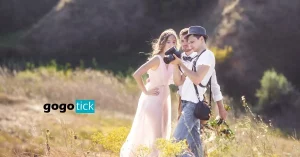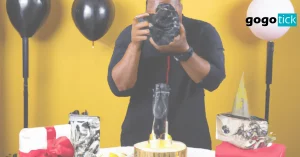Whether you’re a professional photographer or an amateur looking to start making money from your hobby, corporate events are a great opportunity. Even if you’re just trying to help a friend or colleague by using your photography skills in a way that you normally wouldn’t, there is plenty of good that can come from shooting a corporate party. Corporate Party Photography is very rewarding, but there are some essentials to know before you get started.
How do you do photography for a corporate party? If you’ve never shot a corporate party before, there are a few things that you need to keep in mind. If you do good prep work, then you’ll be able to execute at the event. If you execute at the event, then you’ll be able to deliver the kind of results that will thrill your client. That’s all it takes to get repeat gigs and referrals that keep you working.
It doesn’t matter if it is a career goal, a new direction, an additional service line, or a one-off—you want to produce the kind of results that you can be proud of. Aim for excellence in everything you do as a photographer, and your work will always be your best marketing and advertising tool. Being able to show examples of outstanding work at corporate parties is one more thing you can claim in your portfolio. Read on to get tips on how to make sure your first corporate party produces professional results.
3 Steps to Successfully Shooting a Corporate Party
Some photographers think of themselves as artists first, but they still have bills to pay. Other photographers think of themselves as photojournalists and focus on specialized areas like politics, breaking news, or sporting events. Some photographers think of themselves as hobbyists and have a hard time believing that their skills could earn them a paycheck. Every photographer can get paid for doing corporate events if they know a few simple steps that add up to a reliable process.
Who can do Corporate Event Photography?
- Photography Students and Skilled Amateurs Hoping to Make Some Extra Money
- Experienced Art Photographers and Photojournalists Looking for a Side Income
- Professional Photographers Wanting to Add A Lucrative Service to Their Portfolio
There’s no reason to avoid doing corporate events unless you’re a photographer who is so busy doing work in their area of specialization that you simply don’t have time, and you’re making so much money doing it that you don’t need any extra income. Corporate events can seem overwhelming at first, and that leads many to the false impression that they’re more trouble than they’re worth.
Corporate events can vary a great deal depending on the type of event, the size of the corporation, and the industry they work in. But if you know your equipment and have solid fundamentals, there isn’t a corporate event that you can’t plan for and execute in a way that will produce results that you’ll be proud to charge for, and your client will be happy to pay for.
Like any other photography session that you’ve worked in the past—whether for free or at premium rates, you’ll want to do your homework while negotiating the terms of the gig and preparing for the day of the event. Doing good prep work will help you develop a strategy for the event that will make sure you get everything the client expects as well as some extras that exceed expectations. Once you’ve got it all on memory cards, you just need to deliver the results and wrap the gig up like a pro.
What do you need to know to succeed at Corporate Event Photography?
- A Plan for Preparing Like a Pro
- A Plan for Executing Like a Pro
- A Plan for Delivering Like a Pro
- Do Your Homework: How to Prepare for a Corporate Party Like a Professional Photographer
The thing that separates amateurs from pros is the way that they prepare. For someone who is new to photographing corporate parties, the biggest obstacle to good prep work can be all of the things that you don’t already know from experience. But the truth is that every corporate event is different, and so even a seasoned professional will start by asking questions. That’s how you start to find out the information that you need to know to be able to prepare.
Not only will you need to know the details of the event to make sure you know how to prepare, but it will also be essential to put together a quote that makes sure you get paid enough to cover your costs as well as your time. Knowing more about the event is essential to making sure you have the equipment you need, an idea of the client’s goals for the photos you take, and how much all of that is worth.
The type of event that you are shooting, the venue that you’ll be working in, and the things that your client intends to do with the photographs you take are information that forms the foundation of the work that you’ll do to make sure you’re prepared to execute and deliver professional results. Let’s look at these areas in more detail before moving on to some general steps that will apply to every event.
Types of Corporate Parties and Events
Even when you’re talking about corporate parties instead of corporate events, you need to be aware of just how different these types of gigs can be. Are you being asked to shoot a conference reception? An awards dinner? A charity gala? A holiday party? Knowing what you’re signing up for is important because every different type of even has its own schedule and flow, and you’ll need to know what moments are the “can’t miss” photo opportunities.
It won’t matter how many great candid shots you get of the guests who are in attendance at the event if you miss the keynote speaker at the podium or the winners of the silent auction at a charity gala. The team working on the event for your client might not realize that you don’t know what you don’t know. Maybe they’ve always done it the way they’re doing it and aren’t aware that they need to share the information. As a professional working the event, it’s your job to ask.
Does the client want photos of guests arriving? If so, do they have a backdrop that they’ll be setting up for a red-carpet type entry, or are they expecting you to come up with a strategy for getting those shots? If you don’t communicate about the event at this level of detail and establish what the expectations are, then you might find yourself without the equipment or accessories that you need to deliver what the client wants.
Is there any part of what the client wants you to do that could be impacted by the weather? Could rain or cloud cover throw a wrench into your plans? If so, you need to have a fallback option that you can put into effect quickly and with minimal disruption. Otherwise, you’ll be trying to soothe a client’s disappointment by telling them that you can’t control the weather.
Client Goals for the Photos You Take
You might think that the reason to find out what a client intends to do with the photos you take is most important to the image quality of the files that you deliver—but that’s not the case at all. You should shoot and deliver high-quality images and let the client adjust files sizes for different uses as appropriate when they get to work on that part of their plan.
But you should still find out what their goals for the photos are. One reason is that it will give you guidance on where to look for additional insight while you’re doing research and preparing for the gig. Another reason is that it will help you to think creatively about how to deliver some extras that exceed the client’s expectations and set you apart from any photographer who just shows up and phones things in.
Does the client have a website, social media, a newsletter, or other self-produced content that they want to use the images for? If so, you should look at all of those platforms to get an idea of what fits with the personality and image that the corporation projects through them. You should try to produce work that will fit with what they have while being a little bit better than what’s come before you.
Knowing where the client intends to use your photos will help you figure out how to be better than what they’re used to because you can compare what they have on their sites with what other companies in the same industry or sector have in similar spaces. That will be a key to coming up with ideas for shots that go beyond the same-old-same-old and really stand out.
Make Sure You Have What You Need
Once you’ve found out what you can about what type of event you’re shooting and what the client hopes to do with the shots you catch, you’re well on your way to being fully prepared to deliver professional results. But as you start to take the information that they give you and fit it into a plan of action for the day of the event, you’ll probably realize that you have questions that you forgot to ask and that their information can’t answer. Start making a list so that nothing falls through the cracks.
Do you know how to dress for the event? You’ll want to blend in as you go about your business. Usually, you can accomplish this by dressing similar to the guests of the party, but you might also want to consider dressing similarly to the event staff. You don’t want to be underdressed or to be so flashy or out of synch with the event that you stand out while you’re shooting.
Do you have all of the equipment that you’ll need and enough backups to keep you rolling if something goes wrong? This can include cameras, lenses, flashes, umbrellas, stands, and even backdrops. A good rule of thumb is to have a backup for everything, but when in doubt, most professionals lean on the old adage that it is better to have it and not need it than to need it and not have it.
Do you have contact information for everyone that you might need to get in touch with? This can include a point of contact at the venue, a single point of contact at the client, and anyone else who you might need to coordinate or collaborate with. If there is a DJ and the playlist includes pre-set songs for certain moments of the program, you might want to get that information to help you know what to expect.
Do You:
- Know What to Expect from the Event?
- Know What the Client Expects from the Pictures?
- Know How to Dress and What Equipment to Bring?
- Plan the Work and Work the Plan: How to Shoot a Corporate Party Like a Professional Photographer
In an ideal world, you’ll be able to scout the location prior to the event. If you’re lucky, you’ll be able to do so during the same time of day that the event will take place. This will allow you to examine everything you need to know about natural and artificial lighting at the venue and plan your supplemental lighting accordingly.
Walking through the venue will also allow you to ask questions about how the venue will be set up for the event. That will let you get an idea of where you can shoot from to get the angles you want on the things you want to shoot. Take plenty of notes during your walkthrough so that you can put together a detailed plan once you get back to your home base and put that info together with what you already know about the client’s expectations.
You should also inquire of the venue, whether there will be a staff break room or similar area where you can store your gear and set-up your downloading and editing station. Each piece of information that you gather will help you get closer to the point where you can visualize each sequence of events during the party and what you’ll need to do to make the most of the opportunities you have to get great shots.
If you aren’t able to do a walkthrough or it can’t be at the time of day that the event will take place, you’ll have to fall back on your skills as a photographer and adjust your plan to make sure that you have the right equipment to be prepared for any possibility. Let’s look at some important tips to remember as you prepare to show up and deliver like a pro the first time you shoot a corporate party.
Show Up and Set Up Early
If you want everyone at the event to see you as a pro, then you need to make sure to start out a step ahead and stay a step ahead. That means getting to the venue early and leaving yourself plenty of time for any set-up or on-site prep work that you need to complete before guests start arriving. You can’t be in two places at once, so don’t let yourself get caught in a trap where you’re setting up “must-have” shots while guests are arriving someplace else.
Have a Shooting Strategy
If you’ve done your homework, you should have a pretty good idea of how the entire event is going to unfold and which moments are the most crucial for you to get good shots of. You should use that information to come up with a strategy that helps you be where you need to be just far enough in advance that you’re ready and waiting for the photo opportunities that you’re trying to capture.
Be Unobtrusive
You’ll probably have your laptop and external drives set-up somewhere that is out of the way and private. You will want to use that spot to switch out memory cards so that they can download while you’re back out on the floor working.
Try to anticipate pauses or breaks in the action that will give you the opportunity to slip away and do your own housekeeping without pulling you away from moments that you want to capture. If a meal is being served, that is a great chance to do some housekeeping as you won’t want to photograph guests while they eat.
Keep a Checklist and Make Sure You Check All the Boxes
Once things get going, it can be easy to get swept up in the flow of the event. If you don’t have a checklist of shots that you agreed to get for your client, you’ll probably realize too late that you missed a moment that you wanted or needed to get. A checklist of the people and moments that are “must-have” will keep you focused on the things you need to do to deliver everything that your client wants and a little bit more.
Do You:
- Know the Schedule?
- Have a Strategy?
- Have a Written Plan to Keep You on Track?
- Finish Strong: How to Wrap-Up the Event, Deliver Files, and Follow-Up Like A Professional Photographer
At this point, you’ve invested a lot of time and effort into delivering results for your client that will make them happy to pay for your services and eager to provide references and referrals. You don’t want to let all that work go to waste or fail to maximize the benefits by stumbling as you approach the finish line. True professionals know how to be a pro until the whole job is done.
Little things like checking out early, taking too long to send or hand over deliverables, bringing up subjects at inappropriate times, or failing to clean up after yourself can leave the client with a negative impression. Remember that the last thing the client remembers about your performance will probably be the first thing they think of when somebody contacts them for a reference or referral.
Even if you managed to prepare like a pro and conducted yourself like a top-notch photographer during the event, you can’t leave anything to chance. No matter how good your photos are, they might not make up for an ill-timed conversation about payment or something else that comes off as rude or unprofessional.
Work All the Way Through the Event
Just as it is important for you to be set up and ready before the guests arrive, it is a good idea to plan on putting all of the tear-down and wrap-up off until the guests have left. Unless you’ve agreed to some other arrangement with the client during the negotiations, it’s always best to be and remain fully committed to shooting every part of the event.
Not only will this guarantee that you’re ready to capture great stuff whenever it happens—but it will also keep all of the back-end activities of your job out of the guests’ line of sight.
If the best part of the party is all of the hugs and handshakes that go along with the farewells at the end of the evening—you don’t want to be in the break-room downloading memory cards or tearing down backdrops and stands.
Deliver Efficiently
Many of the photographers that work corporate events arrange to hand off an external drive with the files before they leave the event. You can use this trick to come off like a seasoned pro if you find out the operating system that your client prefers. You’ll get bonus points if you find out what type of operating system they use for photo files on their corporate server and name your files accordingly.
If you aren’t going to hand off the deliverables at the event, you should have a plan in place for getting the files to your client in a pre-arranged fashion no later than the day after the event.
Tear-Down & Clean-Up
It won’t reflect well on you if after the event ends and you deliver great photos to your client, they hear from the venue that hosted the event that you left behind a mess. Good housekeeping is fundamental in every profession, and true professionals always clean up their own messes.
Be sure to quickly tear down all of your equipment and get it loaded out so that the event staff isn’t working around it as they try to clean up and close down the venue. Be sure that you haven’t left anything behind in your staging or storage areas. Don’t rush to get out of there, but don’t waste time or get in the way either.
Billing & Transition
Most corporate parties won’t require you to do any photoshopping or heavy editing. This is especially true if you plan your strategy and execute it according to your plan. So, it shouldn’t take you very long at all to deliver the photos to your client after the event concludes. It’s best to make a plan prior to the event and stick to that plan all the way up until you’ve been paid.
If you have to discuss billing or payments, be sure to do it at a time and in a place where it’s appropriate. You don’t want to put your client in an uncomfortable position in front of their guests, and you don’t want the guests to get the wrong impression of who you are and how you work.
Once the client has the photos and you’ve received the final payment, it’s a good idea to send a thank-you type note. You might want to request feedback or a referral if you think that the client is happy with the work that you’ve done. If you want to use the client as a reference, be sure to clear it with them before doing so.
Did You:
- Get Everything You Needed and the Client Wanted?
- Deliver Photos in a Timely Manner?
- Clean Up After Yourself When the Job Was Done?
- Get Paid and Request References or Referrals?
Conclusion
Photographing corporate events can be a fun way to supplement your current income or a great area to focus on as you develop a clientele for your photography business. If you’ve never shot a corporate event before, it can be easy to get overwhelmed or intimidated once you’re negotiating a job with a prospective client. If you follow the tips and tricks that are provided in this article, you’ll give your clients the impression that you know what you’re doing and produce results that are worth paying for.
The rules to follow when photographing a corporate event aren’t that different from any other photography job—or any other profession for that matter. Get all of the information that you need to know before you commit to doing the job so that you don’t get in over your head. Use that information to make a plan that will keep you on track all the way through the event. Use your skills as a photographer to make the most of every opportunity and go hard all the way to the end. A job well done is a job that is done well until the job is done.
Sources
https://expertphotography.com/definitive-guide-corporate-event-photography
https://www.eventbrite.com/blog/corporate-event-photography-tips-ds00
https://www.mybluprint.com/article/corporate-event-photography
https://photographylife.com/corporate-photography-tips
https://www.donnasantos.com/how-to-get-stunning-corporate-event-photography
https://www.wix.com/blog/photography/2018/03/15/corporate-photography








